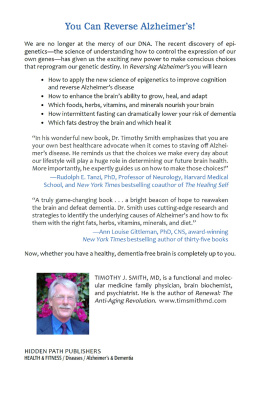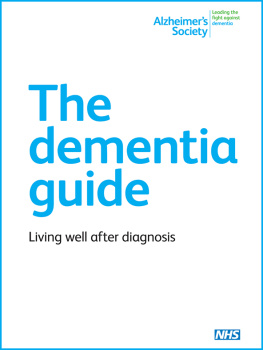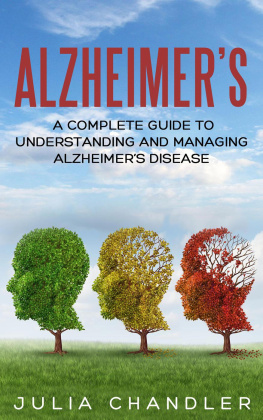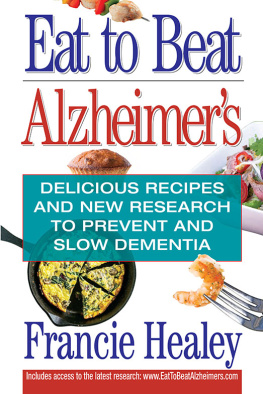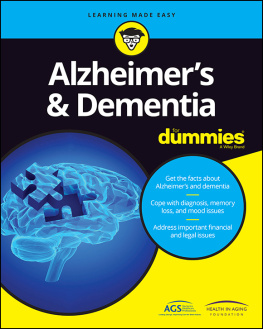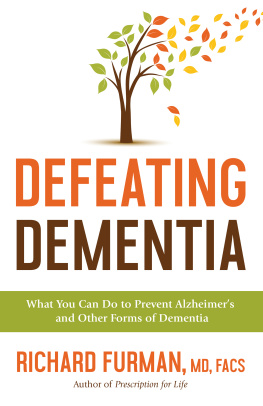A READERS DIGEST BOOK
Copyright 2015 Trusted Media Brands, Inc.
All rights reserved. Unauthorized reproduction, in any manner, is prohibited.
Readers Digest and The Digest are registered trademarks of Trusted Media Brands, Inc.
Fitness illustrations by Alison Muoz.
ISBN 978-1-62145-244-7/Epub ISBN 978-1-62145-245-4
We are committed to both the quality of our products and the service we provide to our customers. We value your comments, so please feel free to contact us.
Readers Digest Trade Publishing
44 South Broadway
White Plains, NY 10601
For more Readers Digest products and information, visit our website:
www.rd.com (in the United States)
www.readersdigest.ca (in Canada)
NOTE TO OUR READERS
The information in this book should not be substituted for, or used to alter, medical therapy without your doctors advice. For a specific health problem, consult your physician for guidance.
Mention of specific companies, organizations, or authorities in this book does not imply endorsement by the author or publisher, nor does mention of specific companies, organizations, or authorities imply that they endorse this book, its author, or the publisher. The brand-name products mentioned in this book are trademarks or registered trademarks of their respective companies. Internet addresses and telephone numbers given in this book were accurate at the time it went to press.
Contents
Introduction
If you picked up a book like this one 20 years ago, youd find little hope between its covers. Back then, many scientists believed that dementia (a noticeable loss of mental functioning caused by Alzheimers or any number of other brain diseases) was a natural and inevitable consequence of aging.
In your 40s or 50s, so it was thought, youd start to experience mild senior moments, such as occasionally losing your reading glasses or car keys. Into your 60s and 70s, youd increasingly find that youd walked into a room but had forgotten why. Maybe, during conversations, youd lose your train of thought. New tasks, such as learning how to program the television, would make your head hurt. If you were fortunate enough to live into your 80s and 90s, your mind would continue to unravel. Your family members would seem like strangers. Eventually youd no longer remember basic self-care and personal hygiene. Ultimately youd die from infections like pneumonia or bed sores.
The only thing that would stop you from eventually dying of complications from dementia: dying of heart disease, cancer, or some other disease first.
Well, Im happy to report that all of this has dramatically changed for the better. More than 73,000 research papers about causes and treatments for dementia have been published in the past 20 years. Thats an average of 10 papers a day. In recent years, thanks to the development of functional magnetic resonance imaging (fMRI for short), weve been able to peer inside of the human brain while people are still alive, studying brain activity in real time. This new tool has led to several exciting, scientific developments that have changed our understanding of the aging brain and also of Alzheimers disease, the most common cause of dementia. We now know that:
Our brains are remarkably resilient. Theyre not stuck in time. Rather, theyre capable of maintaining and repairing themselves, a phenomenon we refer to as plasticity. This is why some stroke victims eventually recover and regain the ability to talk and move. Their brains build new connections, relearning how to form words and how to move affected muscles. This is particularly true if we provide our brains with what they need to complete these important maintenance tasks. Just as a state-of-the-art highway system needs maintenance workers, new asphalt, and the occasional construction crew to change continually for the better, our brains need a rich environment with social, cognitive, and physical stimulation. Outsmarting Alzheimers will show you how to create the optimum environment for continual brain maintenance. The Brain Smarts prescriptions in Part Two will teach you what you need to do to remodel your brain for the better.
Old brains can grow new cells . The size of your brain is, in part, determined by the number of brain cells (also called neurons ) it contains. If new brain cells are created at the same pace that older cells die off, your brain volume remains constant. If cells die off faster than cells are created, the brain shrinks, and cognitive health declines. What does it take to stop the brain from shrinking as we age? Exercise, a healthy diet, a rich social life, good sleep habits, and a combination of other Brain Smarts suggested in Outsmarting Alzheimers. These strategies can protect your brain even if you are genetically predisposed to developing Alzheimers disease. When researchers from the Cleveland Clinic in Ohio used fMRI machines to scan the brains of 100 men and women who had a family history of Alzheimers disease, they found that the hippocampal brain regions of people who exercised remained the same size over an 18-month period, a time period that would normally be associated with a small amount of brain shrinkage. This is important because the hippocampus is the region of the brain most affected by Alzheimers disease.
When we change our lifestyles for the better, our brains change for the better, too. Ive spent the past 25 years researching Alzheimers disease, first at Harvard Medical School and later at University of California, Santa Barbara. As a neurologist, Ive treated patients who either have already been diagnosed with Alzheimers disease or who are at risk for developing it. During this time, Ive watched as fascinating research trends have unfolded. On the one hand, studies have dashed our hopes over and over again when it comes to finding a prescription medicine or technological treatment for Alzheimers disease. On the other hand, a vast and growing body of research shows that lifestyle habitswhat you eat, whether you exercise, how you sleep, the quality of your social connections, what you do to buffer stress, whether you challenge your mindcan dramatically reduce your risk for developing this disease.
Risk is a statistical term that describes your chances of getting a disease. We all have some risk for developing Alzheimers disease, but some of usbecause of our genes, a history of concussions, and high blood pressure, among many other factorsare at a greater risk than others, just as people who live in Seattle are at a greater risk of experiencing a rainy day than people who live in San Diego. No matter your current level of risk, however, you can reduce the chances of suffering the symptoms of Alzheimers disease, just as people who live in Seattle reduce their risk of getting wet by carrying umbrellas wherever they go.
Scientists and researchers have never been more optimistic about our ability to help you tackle this disease. A recent statistical review concluded that modifiable risk factorsthings like diabetes, inactivity, smoking, high blood pressure, depression, lack of education, and so oncontributed to a third or more cases of Alzheimers disease.
Yes, healthy living has always been a good idea. This, in itself, is not news. Depending on how closely you follow breaking health news, the strategies that will help you reduce your risk for Alzheimers disease may or may not seem familiar. Youve heard that you should exercise and eat more vegetables, for example, to reduce your risk for heart disease, diabetes, cancer, and many other diseases. But, until recently, the incredible impact of healthy living on the brain wasnt clear.
Alzheimers disease, perhaps the most frightening disease we know, does not have to loom in your later years as some inevitable fate. Its not an inevitable consequence of aging, a condition for which we have no cure, but a disease that every single one of us can combat with clear and effective steps.
Next page

